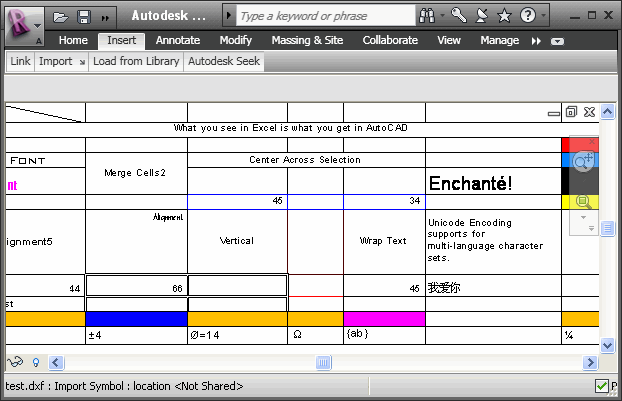Revit Tool Option for Streamlined Modeling and Design
Wiki Article
Grasping the Art of Information Assimilation: Exactly How to Seamlessly Import Excel Files Into Revit
Are you struggling to import Excel documents right into Revit efficiently? Look no more! In this write-up, we will certainly assist you via the process of grasping the art of information combination. Discover the significance of smooth assimilation in Revit and explore the Excel documents style for Revit combination. Obtain prepared to prepare your Excel information easily and follow our detailed guide to import files into Revit. With our ideal methods, you'll achieve data integration success in a snap. Allow's get going!Comprehending the Importance of Information Integration in Revit
Recognizing the importance of data assimilation in Revit is crucial for seamless importing of Excel documents. When you integrate information from Excel into Revit, it permits you to successfully upgrade and take care of details throughout the entire job. This assimilation makes sure that your design and building process is precise and updated.By incorporating data, you can easily import and update specifications, schedules, and even geometry in Revit. This gets rid of the demand for hands-on information access, saving you time and reducing the risk of errors. With Revit's information integration capacities, you can maintain uniformity and precision in your task, while also boosting collaboration among staff member.

Checking Out the Excel Documents Layout for Revit Integration

In order to successfully integrate Excel files into Revit, it is crucial to make certain that the information is formatted correctly. This includes effectively classifying columns and rows, along with structuring the information in a method that is compatible with Revit's information schema. Revit uses particular parameters and classifications to arrange data, so it is necessary to align the Excel data with these parameters to guarantee a smooth combination.
Furthermore, it is crucial to keep in mind that Revit just sustains specific data types when importing from Excel. These consist of message, numbers, and dates. Any type of other information kinds, such as solutions or conditional format, will not be acknowledged by Revit and may trigger issues during the combination process.
Preparing Your Excel Information for Seamless Import Into Revit
To make certain a smooth assimilation process, you'll need to effectively format and tag the columns and rows in your Excel data prior to importing it right into Revit. Because it permits Revit to precisely interpret and arrange your information, this action is essential. Beginning by analyzing your Excel data and determining which rows and columns contain relevant information for your Revit job. After that, see to it to classify each column with a descriptive and clear header. This will assist you and others conveniently comprehend the function of each column and prevent confusion during the import process.Next, make certain that the information in each column is effectively formatted. For example, if you have a column for measurements, ensure that all dimensions are continually formatted in the very same devices of dimension. Revit relies on regular formatting to properly interpret and import data.
In addition, it is very important to look for any type Get More Info of empty cells or inconsistencies in your information. Revit might not have the ability to review or import information from cells that are empty or have mistakes. Consequently, it is recommended to assess your Excel data and clean up any kind of variances before importing it into Revit.
Step-By-Step Guide to Importing Excel Data Into Revit
Once you have actually correctly formatted and identified your Excel information, you can conveniently import it into Revit by following this detailed overview. To begin, open Revit and navigate to the "Insert" tab. import excel into revit.Next, a dialog box will appear, enabling you to customize the import setups. Right here, you can choose the worksheet you intend to import, define the series of cells to import, and choose the appropriate devices for your data. Once you have actually made your options, click "OK" to proceed.
Revit will now show a sneak peek of your Excel data. Take a moment to guarantee and examine the sneak peek that every little thing looks correct. If required, you can make adjustments to the import setups by clicking on the "Settings" button.
Best Practices for Information Integration Success in Revit
Make certain you comply with these ideal practices to make certain successful assimilation of data in Revit. Most importantly, it is vital to arrange your data in Excel before importing it into Revit. This indicates making sure consistent naming conventions, correct formatting, and precise information depiction. Next, utilize Revit's integrated devices for data mapping. This will certainly allow you to match the columns in your Excel data with the equivalent parameters in Revit. Be mindful of the devices and data types when mapping the data, as any inconsistencies can bring about mistakes in the assimilation process.An additional vital method is to regularly verify and update your data. As your job proceeds, it is necessary to maintain your Excel documents up to date with any kind of changes made in Revit. This will certainly help maintain the precision and uniformity of your data across both platforms. In addition, utilize data recognition tools within Revit to identify any kind of mistakes or incongruities in the incorporated data. over at this website
Finally, it is advised to develop a clear process for information integration. This includes specifying roles and responsibilities, establishing up a communication network between team participants, and developing a normal cadence for data updates and evaluations. By complying with these ideal techniques, you can make sure a effective and smooth combination of data in Revit, ultimately enhancing the efficiency and precision of your project.
Verdict
In conclusion, grasping the art of information integration is vital for smooth import of Excel files into Revit. Understanding the more importance of information integration in Revit is the very first action towards successful assimilation. Exploring the Excel data style for Revit integration aids in recognizing the needs and limitations. Preparing the Excel data effectively and following a detailed overview is vital for a smooth import process. By complying with best practices, you can make sure data assimilation success in Revit and make one of the most out of your job.When importing information from Excel into Revit, it is crucial to understand the documents format and exactly how it can affect the combination procedure (import excel into revit). Revit makes use of certain specifications and groups to organize data, so it is vital to straighten the Excel information with these criteria to make sure a seamless integration
Be mindful of the systems and information kinds when mapping the data, as any kind of disparities can lead to errors in the combination process.
In addition, make use of data validation devices within Revit to identify any kind of mistakes or disparities in the integrated data.

Report this wiki page